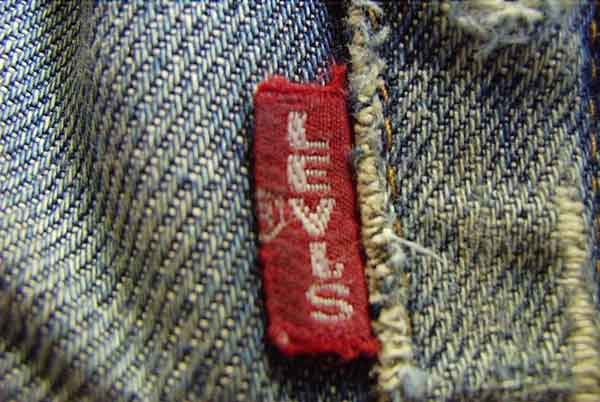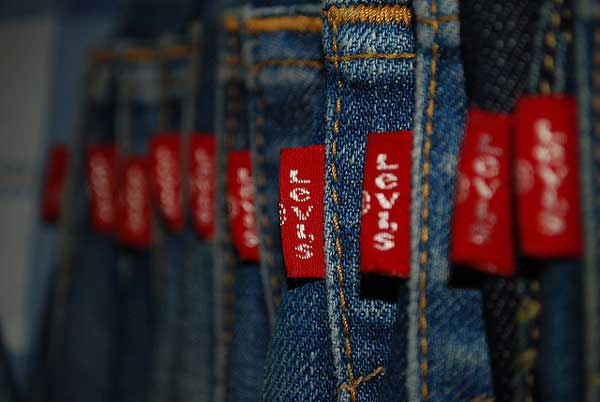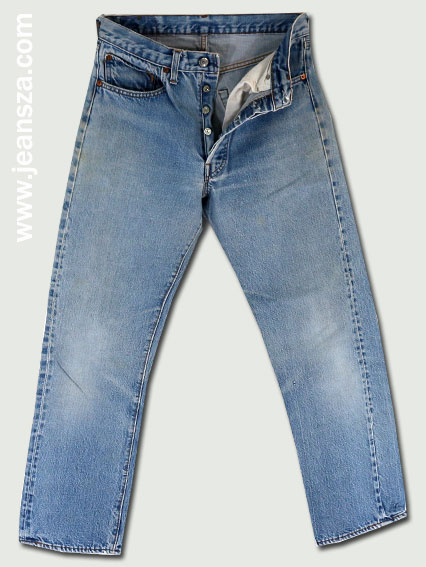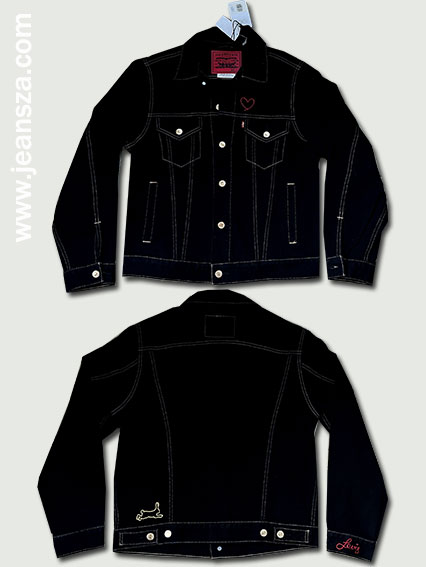Let's Talk About Levi's Big E!
This isn't just any pair of jeans; it's a legend that collectors and denim lovers worldwide search for. I'm going to tell you the story like a friend telling a friend, so it'll be easy to understand with no confusing technical jargon, I promise!
The Origin of a Legend: The Pre-Big E Era
Before we dive into what makes something "Big E," we need to understand a bit about Levi's early days. Way back when, around the early 20th century, Levi's was a pioneer in making jeans for miners, railroad workers, or anyone who needed incredibly durable clothing. Fashion wasn't even a thought; all that mattered was that they wouldn't rip!
Levi's jeans back then were made purely for function. The denim used was thick and heavy, with super durable stitching. What stood out and became a unique hallmark of Levi's from the very beginning was the Red Tab, that little red tag sewn onto the right back pocket. Initially, Levi's created the Red Tab to differentiate themselves from other brands that started making similar jeans. Back then, there weren't clear trademarks like today, so they thought, "Hey, if we make this little red tag, people will know it's authentic Levi's!"
The Golden Age of Levi's and the Birth of Big E
Now, for the important part: the era when Levi's still produced jeans with meticulous care and hadn't yet focused on cutting production costs like today. The period we're talking about is before 1971. All Levi's jeans produced before 1971, whether they were 501s, 505s, or any other model, had what's called a "Big E" on the Red Tab.
This "Big E" refers to the letter "E" on the Red Tab. If you look closely, you'll see that the letters "L," "E," "V," "I," "S" on Levi's Red Tabs produced before 1971 all had the "E" as a capital letter. That's why it's called CAPITAL E.
Why was it a Big E? The simple answer is that back then, Levi's didn't overthink it; they just capitalized all the letters. There was no special intention. But as time passed, this small detail became a crucial indicator that allowed collectors to distinguish between old and new.

The Key Difference: Big E vs. Small e
So, what was the turning point? The significant turning point was 1971. After that year, Levi's decided to change the lettering on the Red Tab. Instead of all caps (LEVIS), they switched to a lowercase "e" (LeVI'S).
Why the change? There are several reasons, but the main one was about reducing production costs. Manufacturing fabric with the new lettering might have been easier or cheaper, or perhaps it was a small rebranding effort. Regardless, this change is what gave rise to the term "Big E," as it clearly demarcated truly vintage jeans from those produced after 1971.
Think about it: Levi's jeans produced before 1971 were limited in number and weren't mass-produced like today. Plus, wear and tear over time meant many were lost. So, Levi's Big E jeans became increasingly rare, and that's what made their value skyrocket incredibly.

The Hidden Charm of Big E
Beyond their rarity, what makes Big E so special?
-
Denim Quality: Big E jeans often used higher-quality denim than what's commonly found today. You can see it in their thickness, durability, and, most importantly, their fades. Big E jeans develop beautiful, nuanced fades that are unique to each wearer as they're worn and washed. Many modern jeans just can't replicate that same level of fading.
-
Production Details: Levi's Big E jeans have certain production details that differ from modern jeans, such as the stitching, the buttons used, or even the placement of the belt loops. These small details are what give Big E its own charm and demonstrate the meticulous craftsmanship of that era.
-
Story and History: Owning a pair of Big E jeans is like owning a piece of history. A single pair of jeans might have gone through countless stories—perhaps worn by a gold miner during the Gold Rush or a truck driver crossing America in the old days. To feel that connection through just one pair of jeans is an invaluable experience.
Finding and Caring for Big E
For those who want to own a pair of Levi's Big E, finding them isn't easy. You'll usually find them in vintage clothing stores, large vintage markets, or even on online platforms. But what you need to watch out for are fakes, as their rising value has led to many counterfeits.
Quick tips for identification: Besides the Big E Red Tab, there are other details to look for, such as the back pocket stitching, which is often single-stitched on some models, the stamped numbers on the buttons, or copper rivets. These are small details that require knowledge and experience to spot.
Once you have a pair of Big E jeans, proper care is just as important. These vintage jeans are like precious antiques that require special attention. Washing should be done gently, and not too frequently, to preserve the fabric's condition and the fades for a long time.
The Enduring Legend
Levi's Big E isn't just a pair of jeans; it's a symbol of an era, quality, and a passion for denim. It represents authenticity, durability, and the stories hidden within every thread. No matter how much time passes, Big E will continue to be sought after and its legend will live on among denim lovers worldwide.
I hope you've gained a better understanding of the Big E story! If you ever get the chance to see a real pair of Big E jeans, try to feel them. Then you'll understand why it's a legend that never truly fades.



